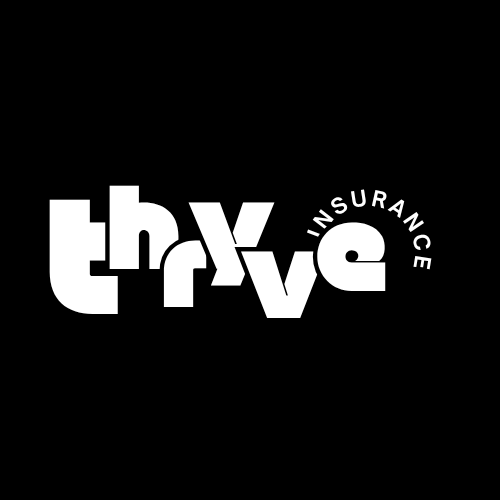Term Life vs. Whole Life Insurance Simplified: What You Really Need to Know
When you start thinking about protecting your family or planning for the future, life insurance is one of the first tools that comes to mind. But once you begin researching, you’ll probably come across two options: term life and whole life.
And that’s where things can get confusing.
What’s the difference?
Which one is “better”?
And how do you know which one is right for you?
In this post, we’re going to simplify the decision so you can move forward with confidence — whether you’re buying your first policy or reassessing your current coverage.
📥 Want the quick version?
Download our free guide → “Term Life vs. Whole Life: 10 Key Differences Simplified”
What Is Term Life Insurance?
Term life insurance provides coverage for a specific period — usually 10, 20, or 30 years. If you pass away during the term, your beneficiary receives the death benefit. If the term ends while you’re still alive, the coverage expires.
Think of it like renting insurance for a limited time.
Benefits of Term Life:
Affordable premiums – Great for young families or budget-conscious individuals.
Simple to understand – Fixed premiums and a clear end date.
Great for temporary needs – Like paying off a mortgage or covering income loss during child-rearing years.
Downsides of Term Life:
No cash value – You’re paying for protection only, with no savings component.
Temporary – Coverage ends when the term expires.
More expensive later – Renewal costs rise significantly with age or health changes.
📞 Want help finding a term policy that fits your budget?
Book your free call with a licensed advisor
What Is Whole Life Insurance?
Whole life insurance is permanent coverage — it lasts your entire life, as long as you pay your premiums. But here’s where it really stands out: it also builds cash value.
This cash value grows tax-deferred over time and can be accessed through policy loans or withdrawals — making it more than just life insurance. It’s a long-term wealth-building tool.
Benefits of Whole Life:
Lifetime protection – You’ll never lose coverage due to age or health changes.
Guaranteed cash value growth – Your money grows predictably over time.
Policy loans – Access funds for emergencies, investments, or retirement.
Tax advantages – No taxes on growth, no taxes on loans, and death benefits pass tax-free.
Downsides of Whole Life:
Higher premiums – But you’re paying for permanent protection and a cash accumulation feature.
Not ideal for short-term needs – It’s designed for long-term financial strategies.
💡 Did you know? Some people use whole life insurance as a financial system to fund real estate, pay off debt, or grow generational wealth. This strategy is known as Infinite Banking.
📥 Download our free cheat sheet to learn more
Term Life vs. Whole Life: A Side-by-Side Comparison
Real-Life Scenario
Let’s say you’re 32, married with two kids, and you just bought your first home.
You want coverage that:
Pays off the mortgage if something happens to you
Leaves your family in a stable financial position
Doesn’t break the bank today
You might choose a 20-year term life policy for $500,000, which could cost as little as $25/month.
Now let’s fast forward to 52. Your term has expired, but you still want coverage. Now you’ll pay significantly more, or worse — you may not qualify due to age or health changes.
Now imagine you had purchased whole life insurance instead. Yes, your monthly premium would’ve been higher — maybe $150–$200/month — but now you’ve built tens of thousands in cash value, and your family is still covered for life.
That’s the power of thinking long-term.
🧠 Not sure what kind of policy fits your life best?
Take our 60-second quiz → “Which Life Insurance Strategy Is Right for You?”
The Hybrid Strategy: Why Some People Use Both
Many people (especially young families or business owners) actually use both types:
A term life policy to cover large short-term responsibilities like the mortgage or income replacement.
A whole life policy to build savings, provide lifetime coverage, and create wealth that transfers tax-free.
This is a smart way to balance affordability now and long-term financial benefits later.
Common Myths Debunked
Let’s clear up a few common misconceptions:
“Term is always cheaper.” Only upfront. Over a lifetime, it may cost more due to renewals or needing coverage later.
“Whole life is just for the rich.” Not true. It’s used by everyday families who want stability and financial control.
“I don’t need life insurance until I’m older.” Rates are lower and coverage is easier to get when you’re young and healthy.
📥 Our Term vs. Whole Life Cheat Sheet debunks 10 myths — download it free here
Final Thoughts
Term life is affordable and simple.
Whole life is long-lasting and builds value.
Both serve a purpose — depending on your goals, budget, and timeline.
If you’re serious about protecting your family and building a strong financial foundation, the best thing you can do is talk with someone who will walk you through your options — without pressure.
🎯 Call to Actions (CTAs)




